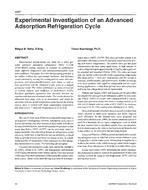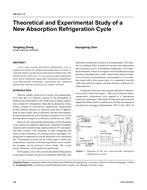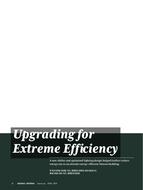Stricter Swedish building regulations require a moisture-safety design process to be carried out before houses are built. In order to predict moisture-critical conditions, a properly verified, user-friendly and reliable calculation tool that could be used in this design phase, is required.
This paper initially presents a blind method that could be used in order to verify heat and moisture calculation tools in a reliable manner. Furthermore, general results and findings from blind validations using a transient heat and moisture calculation tool are summarized and presented.The comparisons include measurements and calculations of temperature and relative humidity and were carried out in northern European climates.
In general, the results show a good correlation between measured and blindly-calculated values. Comparisons show that the studied tool can be used during the design phase to predict moisture risks. However, factors such as the influence of impaired-temperature measurements on relative humidity have to be taken into account. There is also a need for outdoor climate-boundary conditions that take into account critical periods. Measurements and calculations also established that the most moisture-critical conditions in general occurred in the exterior part of the frame, behind the air gap.
Presented at Thermal Performance of Exterior Envelopes of Whole Buildings XII, December 2013
Citation: Thermal Performance of Exterior Envelopes of Whole Buildings XII
Product Details
- Published:
- 2013
- Number of Pages:
- 12
- File Size:
- 1 file , 5.6 MB
- Product Code(s):
- D-BldConf13-32


